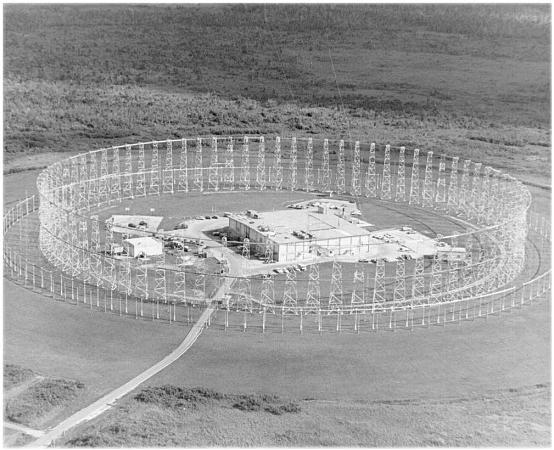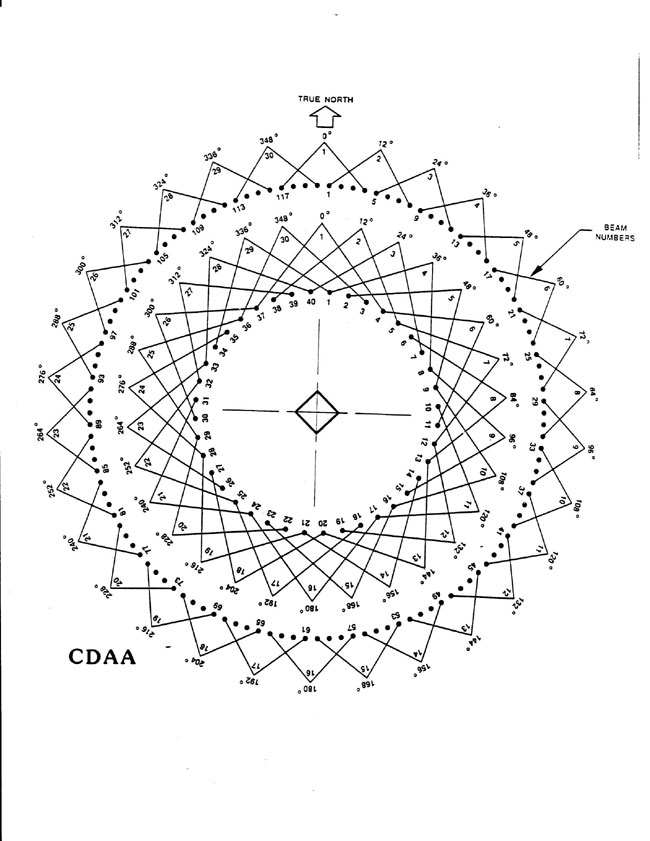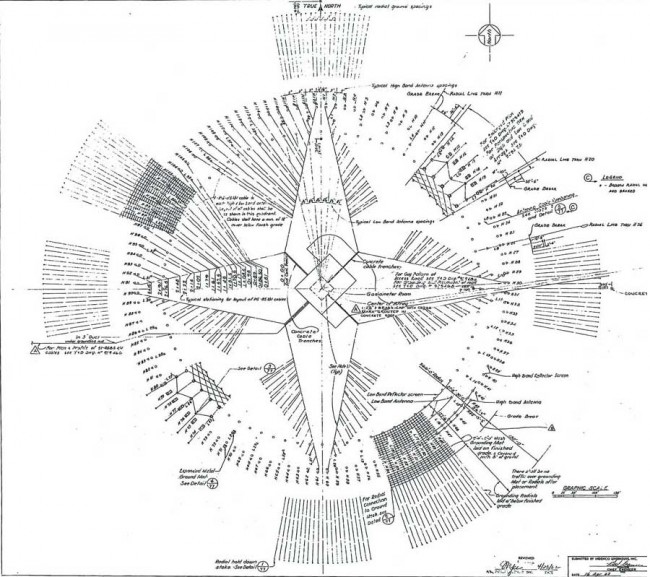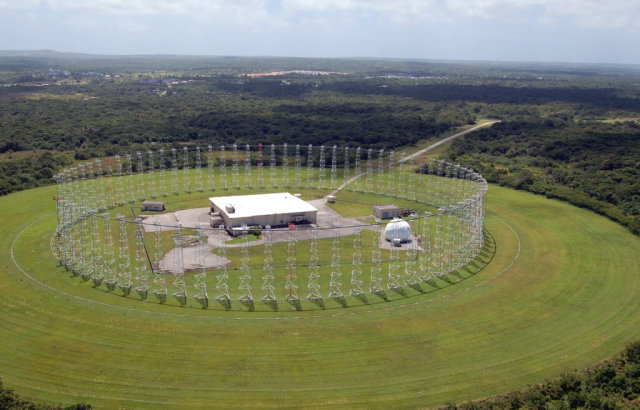This is not really apropos radio broadcasting, but it is about radio and it has a lot to do with engineering. Back in the day, as a young man out to do whatever it was, I ended up being stationed on Guam, working at the Coast Guard radio station there. That was interesting work, to be sure, but every morning and evening, either on my way to or from work, I would drive by this, which looked very interesting:

I had to lift the photo from a Navy Radio history site. Back in my day, aiming or even possessing a camera around this area or building would likely inflict the extreme ire of the Marines, who attentively observed the area and were ready to call down a painful lesson to all not obeying the “NO PHOTOGRAPHY ALLOWED” signs.
Nicknamed “The Elephant Cage” it is a Wullenweber antenna used for high-frequency direction finding (HFDF) and was part of a system called “Classic Bullseye.” There were several of these systems across the Pacific Ocean, and they all worked together using a teletype network. The Army-Air Force version was called a AN FLR-9, which was slightly larger.

There were two concentric rings of antennas, the tallest being the closest to the center building and used for the lowest frequencies. It covered from about 1.5 to 30 MHz. The rings consisted of several individual antennas, all coupled to a Goniometer with coaxial cables cut to identical lengths. The outer ring had 120 vertical-sleeved dipole antennas, and the inner ring consisted of 40 sleeved dipole antennas. The inner ring of towers also contained a shielding screen to prevent the antennas on the other side of the array from picking up signals from the back of the antenna. A radio wave traveling over the array was evaluated and the Goniometer determined the first antenna that received the signal by comparing phase relationships. The ground system was extensive. Immediately under the antennas was a mesh copper ground screen. From the edge of the copper mesh, buried copper radials and extended out 1,440 feet from the building.
The effective range for accurate DF bearings was about 3,200 nautical miles, which equates to about two ionospheric hops with the angle theta between 30 to 60 degrees referenced to the ground.
It was quite effective, it only took a couple of seconds to get a good bearing. If the other stations on the network were attentive, a position could be worked out in less than 10-15 seconds.

It is a little hard to read, but this is the ground layout of the AN FRD-10 CDAA. The transmission lines to each antenna are shown, along with the ground screen and building in the center of the array.
We Coast Guard types used this mainly for Search and Rescue (SAR) and the occasional Law Enforcement (LE) function. I believe we actually saved a few lives with this thing. I found the Navy operators to be very helpful, I think some of them enjoyed the change of targets from their normal net tripping.
The Navy operated AN FRD-10s at the following locations in the Pacific:
- Imperial Beach, CA (south of San Diego)
- Skaggs Island, CA (northeast of San Francisco)
- Hanza (Okinawa) Japan
- Waihawa, HI
- Finegayan, Guam
- Adak, AK
- Marietta, WA
The Air Force/Army installed AN FLR-9’s in the following Pacific Locations:
- Missawa AB, Japan
- Clark AB, Philippines
- Elmandorf AFB, AK
Basically, there was no corner of the Pacific Ocean that could not be listened to and DF’d. Some people look back nostagically at the cold war when we “knew who the enemy was,” so to speak. I am not one of those. They either didn’t really know the enemy or have conveniently forgotten some of the less endearing qualities of the Soviet Union.
I believe all of these systems have been decommissioned and most have been taken down and scrapped. The National Park Service studied the Waihawa, HI system as a part of their Historical American Building Survey (HABS HI-552-B2) (large .pdf file) before it was torn down. Good technical description and building pictures. Near the end of the report, it is cryptically noted that:
Beginning in the mid-1990s the NSG (ed: Naval Security Group), noting the absence of Soviet targets and wanting to cut costs and change the focus of its SIGINT collection, began closing FRD-10 sites… Undoubtedly, since the September 11, 2001 terrorist attack on the World Trade Center and the Pentagon, listening posts have gained importance and most likely increased in number and sophistication. The FRD-10 CDAA at NCTAMS Wahiawa ceased listening in August 2004; it can only be assumed the closure occurred because there was a better way to do it.
Indeed.
The Guam site has been stripped out and abandoned, the latest photo I can find is from 2008:

And people think AM broadcasting is expensive…
